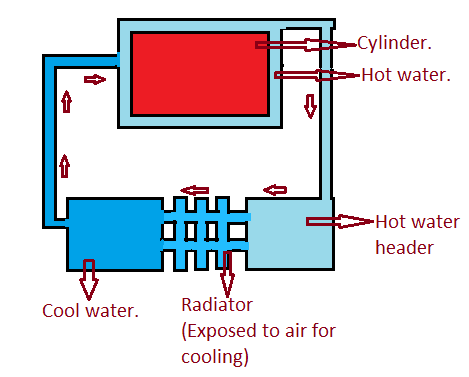What is Multiple Venturi Carburetor?
A multiple venturi carburetor, also known as a twin or dual carburetor, is a type of carburetor that uses multiple venturi to mix fuel and air for internal combustion engines. A venturi is a constriction in the carburetor that creates a pressure drop, which in turn causes air to be drawn into the carburetor and mixed with fuel.
In a multiple venturi carburetor, two or more venturis are used to create different pressure drops and thus provide different fuel-air mixtures to the engine. Each venturi is connected to its own throttle valve, which controls the amount of air that is drawn into the carburetor. By adjusting the position of the throttle valves, the engine can be tuned to run at different speeds and loads.
The main advantage of a multiple venturi carburetor is that it allows for better engine tuning and performance. By using multiple venturis, each one can be tuned to provide the optimal fuel-air mixture for different engine speeds and loads. This can result in improved power, acceleration, and fuel efficiency. Additionally, by using multiple carburetors, the engine can continue to function even if one carburetor malfunctions.
A common type of multiple venturi carburetor is the twin carburetor where two carburetors are used, one for each cylinder bank on a V-shaped engine. It allows to have a fine-tuned mixture for each bank of cylinders, improving performance and emission.
In summary, a multiple venturi carburetor is a type of carburetor that uses multiple venturi to mix fuel and air for internal combustion engines, it allows for better engine tuning and performance, improved power, acceleration, and fuel efficiency, and increased reliability.
How Multiple Venturi Carburetor Works?
A multiple venturi carburetor works by using multiple venturis to mix fuel and air for internal combustion engines. A venturi is a constriction in the carburetor that creates a pressure drop, which in turn causes air to be drawn into the carburetor and mixed with fuel.
The process begins with air entering the carburetor through the air intake. This air then passes through the venturis, which are constrictions in the carburetor that create a pressure drop. As the air passes through the venturis, it is forced to move faster, which in turn creates a lower pressure area. This lower pressure area causes fuel to be drawn up from the fuel bowl through the main jet and into the carburetor.
The fuel and air are then mixed in the carburetor and sent to the engine through the throttle valves. The throttle valves control the amount of air and fuel that is delivered to the engine. By adjusting the position of the throttle valves, the engine can be tuned to run at different speeds and loads.
Each venturi is connected to its own throttle valve, which controls the amount of air that is drawn into the carburetor. By adjusting the position of the throttle valves, the engine can be tuned to run at different speeds and loads. This allows for better engine tuning and performance.
A common type of multiple venturi carburetor is the twin carburetor where two carburetors are used, one for each cylinder bank on a V-shaped engine. It allows to have a fine-tuned mixture for each bank of cylinders, improving performance and emission.
In summary, a multiple venturi carburetor works by using multiple venturis to mix fuel and air for internal combustion engines. Air enters the carburetor, passes through the venturis, which creates a pressure drop, which causes fuel to be drawn up and mixed with air. The mixture is then sent to the engine through the throttle valves, which can be adjusted to control the amount of air and fuel that is delivered to the engine, allowing for better engine tuning and performance.
Advantages of multiple venturi carburetion system?
The multiple venturi carburetion system, also known as a twin or dual carburetor system, offers several advantages over a single carburetor system. These include:
- Improved engine performance: The use of multiple carburetors can increase the amount of fuel and air that is delivered to the engine, resulting in improved power and acceleration.
- Better fuel efficiency: By using multiple carburetors, each one can be tuned to optimize fuel efficiency at different engine speeds.
- Increased reliability: By using multiple carburetors, the engine can continue to function even if one carburetor malfunctions.
- Enhanced engine tuning options: With multiple carburetors, each one can be tuned to provide the optimal fuel-air mixture for different engine speeds and loads.
- Lower emissions: With multiple carburetors, the engine can be tuned to run more efficiently, which can result in lower emissions.


